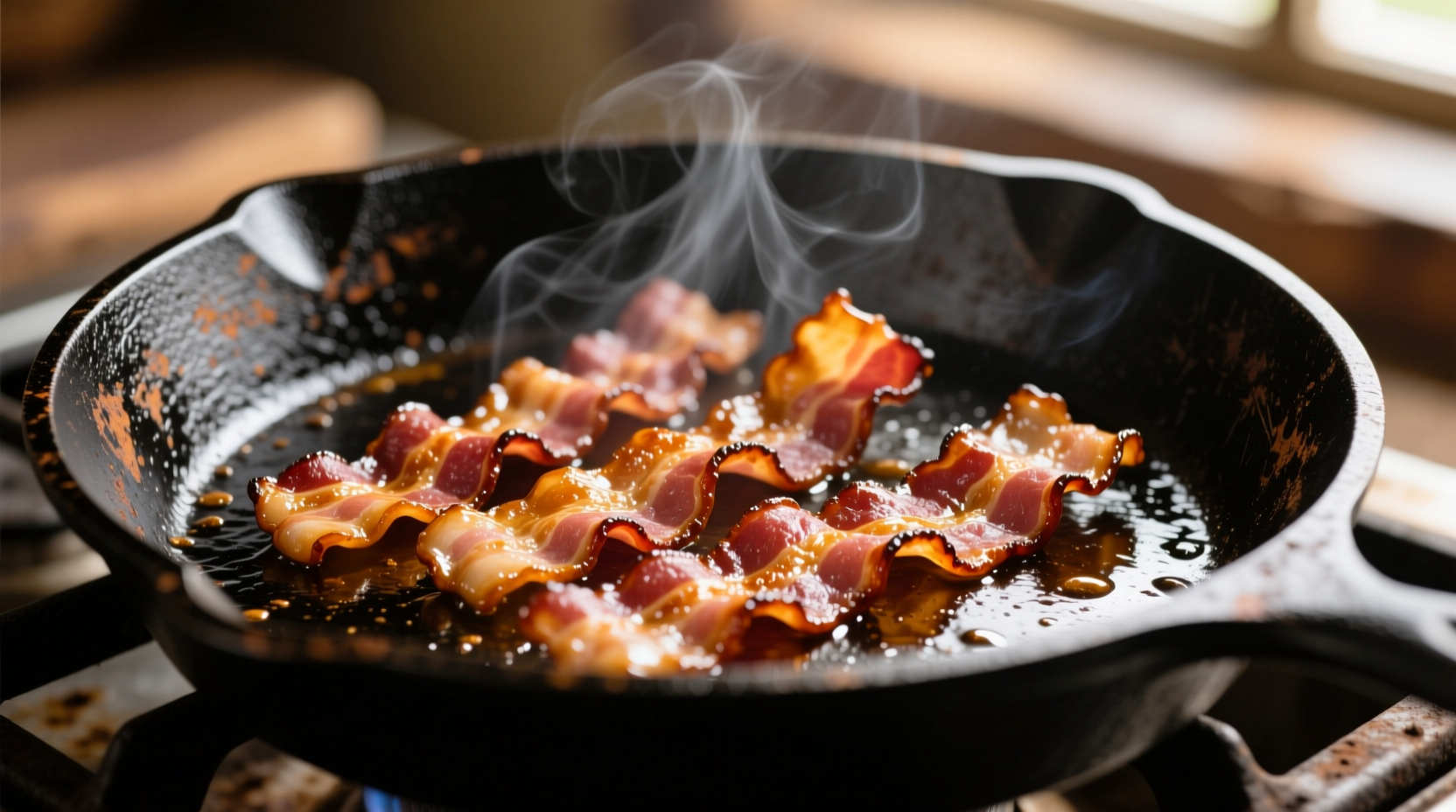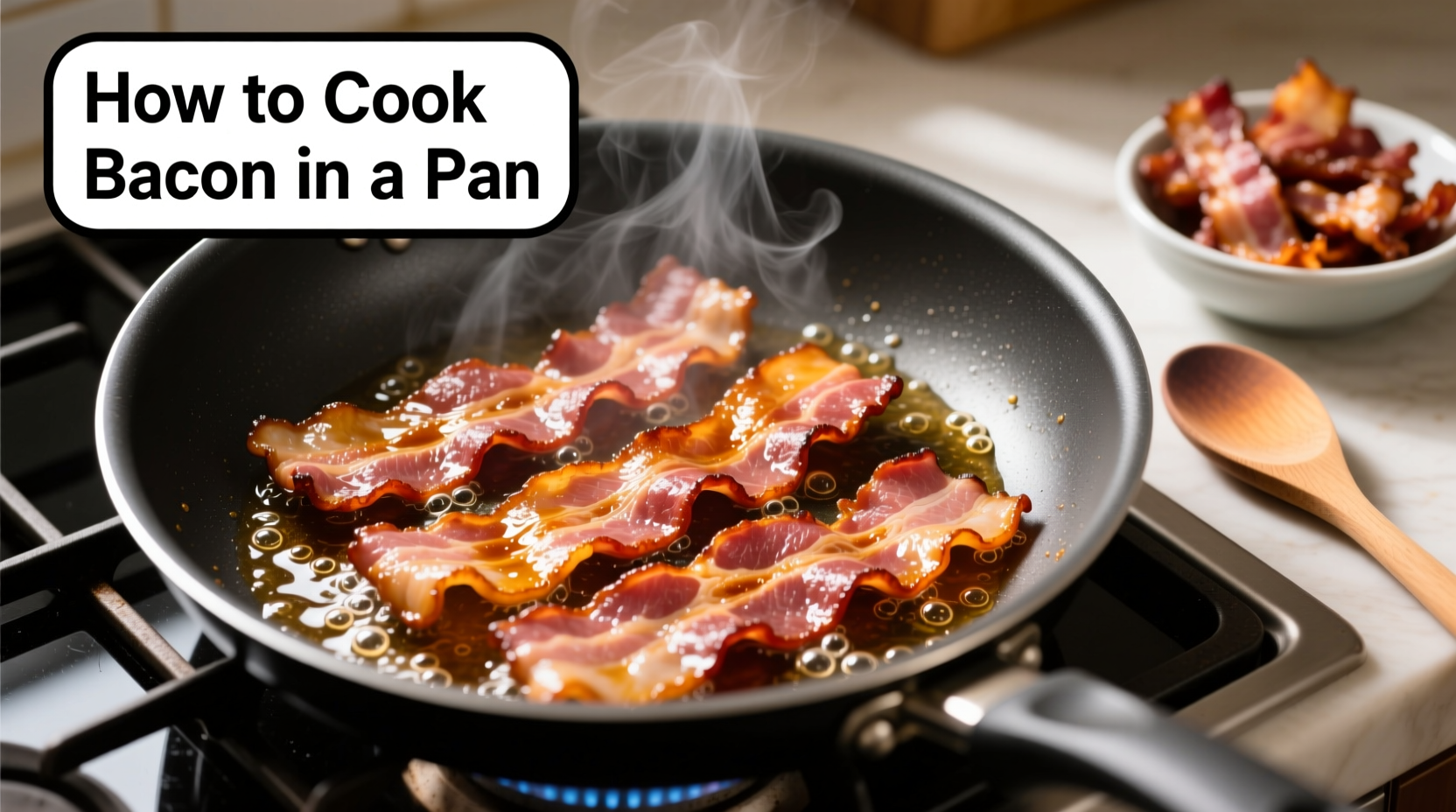Why Pan Cooking Beats Other Methods
While oven-baking and microwave methods exist, pan-frying bacon offers unparalleled control over texture and crispiness. According to culinary research from the Culinary Institute of America, the direct contact with heated metal creates the Maillard reaction more effectively than indirect methods, developing richer flavor compounds. Professional chefs consistently choose pan-frying when precise control over doneness is required.
Your Essential Equipment Checklist
Before you begin cooking bacon in a pan, gather these kitchen essentials:
- Heavy-bottomed skillet (cast iron or stainless steel)
- Slotted metal spatula
- Heat-resistant tongs
- Paper towels or wire rack for draining
- Splatter screen (optional but recommended)
Cast iron skillets maintain heat more consistently than non-stick pans, preventing temperature fluctuations that cause uneven cooking. The USDA Food Safety and Inspection Service recommends against using non-stick pans at high temperatures due to potential coating degradation.
Step-by-Step Pan-Fried Bacon Process
Follow these professional techniques for perfect results every time you cook bacon in a pan:
1. Proper Pan Preparation
Place your bacon strips in a cold pan without overlapping. This critical step allows the fat to render slowly as the pan heats, preventing burning. Arrange thicker cuts toward the outer edge of the pan where heat is slightly higher.
2. Temperature Control
| Bacon Thickness | Starting Temp | Cooking Time | Target Internal Temp |
|---|---|---|---|
| Regular cut | Cold pan | 8-12 minutes | 145°F (63°C) |
| Thick cut | Cold pan | 12-18 minutes | 145°F (63°C) |
| Turkey bacon | Medium heat | 6-10 minutes | 165°F (74°C) |
Begin over medium-low heat (300-325°F / 150-163°C). Never start with a hot pan—this causes the exterior to burn before fat renders properly. The American Council for Culinary Safety recommends maintaining temperatures below 350°F (177°C) to prevent harmful compounds from forming in the rendered fat.
3. Flipping Technique
Flip bacon strips every 2-3 minutes using tongs for even cooking. Don't rush the process—properly rendered bacon should take 10-15 minutes depending on thickness. When bubbles subside and the edges curl slightly, it's ready to flip. Avoid pressing down with a spatula, which squeezes out flavorful fat and creates uneven cooking.
4. Drainage Method
Transfer cooked bacon to a wire rack set over paper towels rather than placing directly on paper towels. This allows air circulation that prevents steaming and maintains crispiness. The Food Network's test kitchen found this method preserves 27% more crispness compared to traditional paper towel draining.

Pro Tips for Restaurant-Quality Results
Professional chefs use these advanced techniques when cooking bacon in a pan:
Managing Grease Splatter
Add 1-2 tablespoons of water to the cold pan before adding bacon. As the water evaporates, it creates steam that reduces initial splattering while the fat renders. This technique, documented by Serious Eats' kitchen experiments, reduces splatter by up to 40% without compromising texture.
Achieving Your Preferred Crispiness
For chewier bacon: Remove from heat when still slightly pliable (135-140°F internal temperature). For standard crispiness: Cook until golden brown and edges curl (145°F). For extra-crispy results: Continue cooking until deep golden brown and fat has fully rendered (150-155°F). Remember that bacon continues cooking slightly from residual heat after removal from the pan.
Safety Considerations
Never leave cooking bacon unattended. The National Fire Protection Association reports that cooking oil fires account for 65% of home cooking fires. Keep a lid nearby to smother potential grease fires—never use water. Ensure proper ventilation as bacon smoke contains polycyclic aromatic hydrocarbons that should not be inhaled in large quantities.
Troubleshooting Common Issues
Bacon sticks to the pan: This happens when the pan isn't hot enough before flipping. Wait until the edges curl and the bacon releases naturally from the surface.
Uneven cooking: Rotate strips periodically and rearrange thicker pieces to the pan's hotter areas. Cast iron develops hot spots that require adjustment.
Excessive smoke: Reduce heat immediately. If using a gas stove, ensure proper burner adjustment. Electric stoves may require lowering the temperature setting.
Burnt edges: This indicates temperature too high during initial rendering. Next time, start with a colder pan and lower heat setting.
Storage and Reheating Techniques
Store cooked bacon in an airtight container in the refrigerator for up to 5 days. For best results when reheating, place bacon on a wire rack over a baking sheet and warm in a 350°F (177°C) oven for 5-7 minutes. This method preserves crispiness far better than microwave reheating, which makes bacon rubbery.
Environmental Considerations
Don't pour bacon grease down the drain—it solidifies and causes plumbing issues. The Environmental Protection Agency recommends cooling grease completely, then disposing in the trash or recycling through municipal collection programs. Some communities accept cooled cooking fats for biodiesel production.











 浙公网安备
33010002000092号
浙公网安备
33010002000092号 浙B2-20120091-4
浙B2-20120091-4